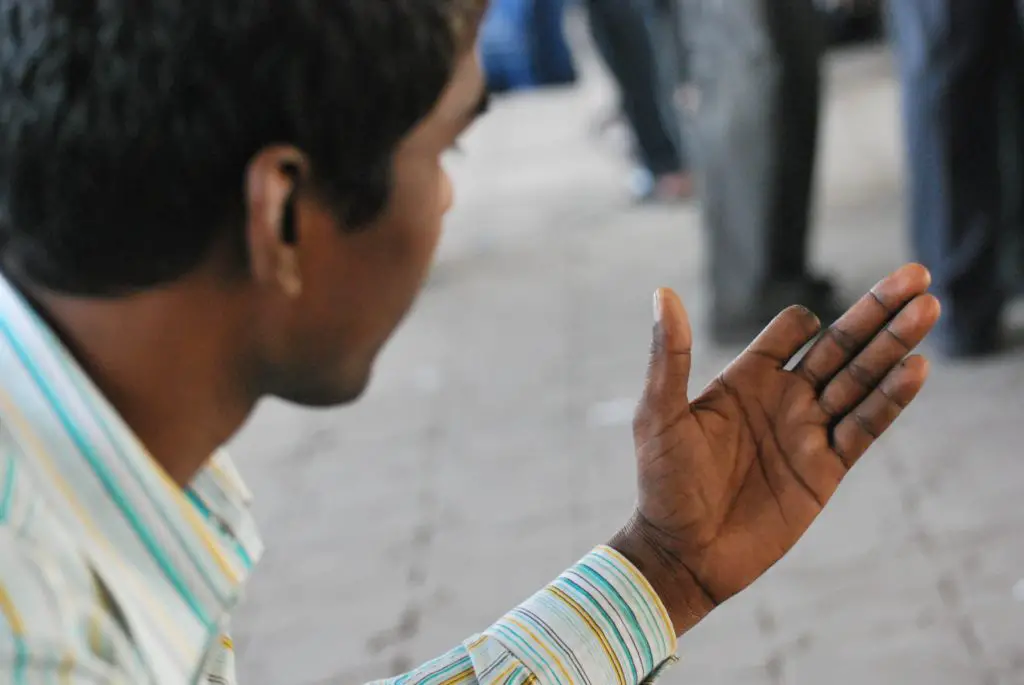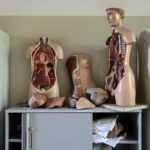Physical injury is the study of the causes and effects of physical disease or injury, aka physical injury, which is damage to the body caused by an external force.
Physical injury includes:
- Mechanical trauma
- Thermal injury
- Electrical injury
- Ionizing radiation injury
- Death
What is Mechanical Trauma?
Mechanical trauma is an injury to any portion of the body from a blow, crush, cut, or penetrating wound.
Examples of mechanical trauma include scratches, grazes, avulsions, tears, chop wounds, etc.
What are the Patterns of Injury?
The patterns of injury are ones that have a distinct pattern that may reproduce the characteristics of the object causing the injury.
Patterns of injury include:
- Abrasions
- Contusions
- Lacerations
- Incisions
- Punctures
What are Abrasions?
Abrasions are the destruction of the skin, which usually involves the superficial layers of the epidermis only.
What are Contusions?
Contusions are the medical term for a bruise and they’re the result of a direct blow or an impact, such as a fall.
What are Lacerations?
Lacerations refer to skin wounds and unlike an abrasion, none of the skin is missing. They may be caused by injury with a sharp object or by impact injury from a blunt object or force.
What are Incisions?
Incisions are produced by a sharp edge and are usually longer than they are deep.
What are Punctures?
Punctures are caused by wood splinters, pins, nails, and glass or scissors and knives and almost any sharp object can potentially cause a puncture wound.
| Abrasions | Contusions | Lacerations | Incisions | Punctures | |
| CAUSE | a lateral rubbing action by a blow, a fall on a rough surface, being dragged in a vehicular accident, fingernails, thorns, or teeth bite | impact with a hard blunt weapon | breach of continuity of tissue involving depth more than the covering epithelium of skin or that of an organ, impact by hard blunt | drawing or saw like the movement of the weapon on the body surface when the weapon is rather light, striking the sharp edge on the body when the weapon is heavy or moderately heavy | the pointed end of a weapon or an object, entering the body |
| CAUSATIVE AGENT | stone, stick, needle, or any other weapon or rough surface of any other material | stone, stick, etc. | rough weapons or objects | a knife or razor, ax, sword | tip of a knife, arrow, needle, blunt end of an iron rod, spear, needles |
| FEATURES | superficial injuries, the lymph or blood which oozes out, and the denuded epithelial debris, dry up within a few hours to form a scab | reddish in color, slightly raised above the surrounding area, painful and tender | shape – usually irregular, margin – irregular, floor – tags of tissue may be seen passing across the floor | shape is elliptical or spindle-shaped, length is greater than breadth and depth, the floor is sharply cut and divided | shape and margin depends mostly on the shape of the weapon, depth is the greatest dimension of a punctured wound |
| TYPES | scratches, grazes, pressure, impact abrasions | patterned bruise, crescent-shaped | split, stretch lacerations, avulsions, tears, cut lacerations | suicidal, homicidal, and accidental, chop wounds | perforated, penetrated wound |
What is Thermal Injury?
Thermal Injury is open flames, steam, contact with hot objects, or hot liquid caused by burning.
Examples of thermal injuries include:
- Thermal burns
- Hyperthermia
- Hypothermia
What are Thermal Burns?
Thermal burns are burns due to external heat sources which raise the temperature of the skin and tissues and cause tissue cell death or charring.
What are Degrees of Burns?
Depth of burn is classified as the first, second, third, or fourth degree. The most useful clinical method to assess burn depth is the extent and speed of capillary refill.
- First degree burns are injuries in which minor epithelial damage of the epidermis exists.
- Second degree burns are injuries in which some portion of the skin appendages remains viable, allowing epithelial repair of the burn wound without skin grafting.
- Third degree burns are full-thickness burns that destroy both epidermis and dermis in which the capillary network of the dermis is completely destroyed.
What are Burn Related Injuries?
Burn related injuries include:
- Inhalation of smoke includes symptoms, such as cough, shortness of breath, hoarseness, headache, and acute mental status changes. Signs that may be useful in determining the degree of injury include soot in airway passages or skin color changes.
- Respiratory damage due to burns includes possible airway obstruction, respiratory failure, and respiratory arrest.
- Shock due to burns is caused by the increase in capillary permeability, coupled with evaporative water loss. Severe burn injury causes coagulation necrosis of tissue that initiates a physiologic response in every organ system that’s directly proportional to the size of the burn.
- Sepsis due to burns remains the major cause of death, immune consequences of this injury have been identified, and are specific deficits in neutrophil chemotaxis, phagocytosis, and intracellular bacterial killing.
- Systemic Inflammatory Response Syndrome (SIRS) can result in multiple organ failures and death.
Speed of care for burns includes immersing the burn in cool tap water or applying cold, wet compresses. This should be done for about 10 minutes or until the pain subsides.
What is Hyperthermia?
Hyperthermia is an abnormally high body temperature caused by a failure of the heat-regulating mechanisms of the body to deal with the heat coming from the environment.
What is Hypothermia?
Hypothermia is a potentially dangerous drop in body temperature caused by prolonged exposure to cold temperatures.
What is Electrical Injury?
Electrical injury is a physiological reaction caused by electric current passing through the body.
What is Ionizing Radiation Injury?
Ionizing Radiation Injury is tissue destruction or changes caused by deeply penetrating electromagnetic waves of high frequency or subatomic particles that form positively and negatively charged particles.
What is Death?
Death is the ultimate physical injury.



